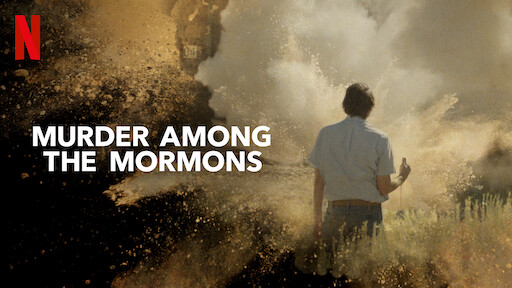During the pandemic, one of my preferred ways of coping with boredom was watching True Crime documentaries on Netflix. Worldwide serial murders -surprisingly, many of them from the Midwest, and I still don’t know how I feel about this- people disappearing, cold cases, blue-collar crimes; you name it, and I probably have seen it. Among these documentaries, one of my favorites was “Murder Among the Mormons,” a docu-series that followed the life and crimes of Mark Hofmann. The show starts by telling the story of Hofmann, a man with an exceptional talent for finding rare and old historical documents pertaining to the very beginning of the Mormon Church. It is not after the last episode, however, that the viewer discovers that Hofmann is, as Wikipedia describes, “an American counterfeiter, forger, and convicted murderer.” until this revelation, I sincerely believed that he was an innocent man; little did I know, he was a mastermind of deception. Yet despite his talents, some of the documents he promised to deliver were too difficult to forge even for him, so he eventually schemed to kill two people and set a bomb on himself in order to buy some time (spoiler alert!).

I was impressed by his killings, but even more so when I realized that this guy spent years and years forging and selling documents; he made a whole community believe –and undertake academic studies around– his fake documents. By now, you are probably wondering why I’m talking about Hofmann when the question that inspires this entry asks whether the digitization of historical data “brings wider horizons or weaker sources.” This question implies the possibility that the digitalization of historical data could be a space where forged papers or fake information can increase, making historical sources weaker; in other words, a space that enables more “Hofmann’s” to achieve their crimes. Yet, to address this question, let me tell you a little about the digitalization of historical data.
The digitalization of historical data can take place in different ways, and is connected to the kind of investigation the scholar is performing. Two examples can show very different ways of collecting data: first, there is the data collection that comes from only one source and only involves documents that are already “authentic,” for instance, a previously private book collection that a university digitalizes for the public. And second, there is the data collection that comes directly from the public, where the scholar –for instance– asks a specific community to share online stories and memorabilia they kept from a significant historical event.
In the first case, we can conclude that digitizing historical data brings wider horizons, mainly because it offers opportunities for worldwide scholars to create new theories or get new conclusions about these books. In the second case, answering this question becomes more complicated. The uploaded documents and stories are not from a verified institution; they come from a Joe/Jane Doe. How do we prove they are not lying or forging documents? Is it worth the risk of collecting this data? Could this digitalization of historical data be the origin for other “Hofmann’s”?
In Digital History: A Guide to Gathering, Preserving, and Presenting the Past on the Web, Daniel J. Cohen and Roy Rosenzweig conclude that the “Concern about the falsification of digital historical documents and materials, we believe, has mostly turned out to be a phantom problem.” If one wanted to forge a document, the requirements go far beyond the mere possession of fake information, since there is a wealth of technical knowledge needed to succeed in deceiving an expert. Thus, to summarize, I don’t believe that digitizing historical data brings weaker sources. On the contrary, it could reveal voices, stories, and documents that otherwise will be lost entirely; in other words, the digitization of historical data brings a wider horizon of sources. Of course, there is always the risk of being lied to; but as Hofmann’s case shows us, this is not exclusively a problem of digitalized data, and it should not stop us from pursuing projects that involve the participation of different members of our society. To conclude, I must say that the real challenge of digitizing historical data, in my view, does not so much relate to the sources themselves but to the way we organize all the information received during this investigation, while keeping it safe for future generations. Yet, that conversation demands another entry.

Leave a Reply